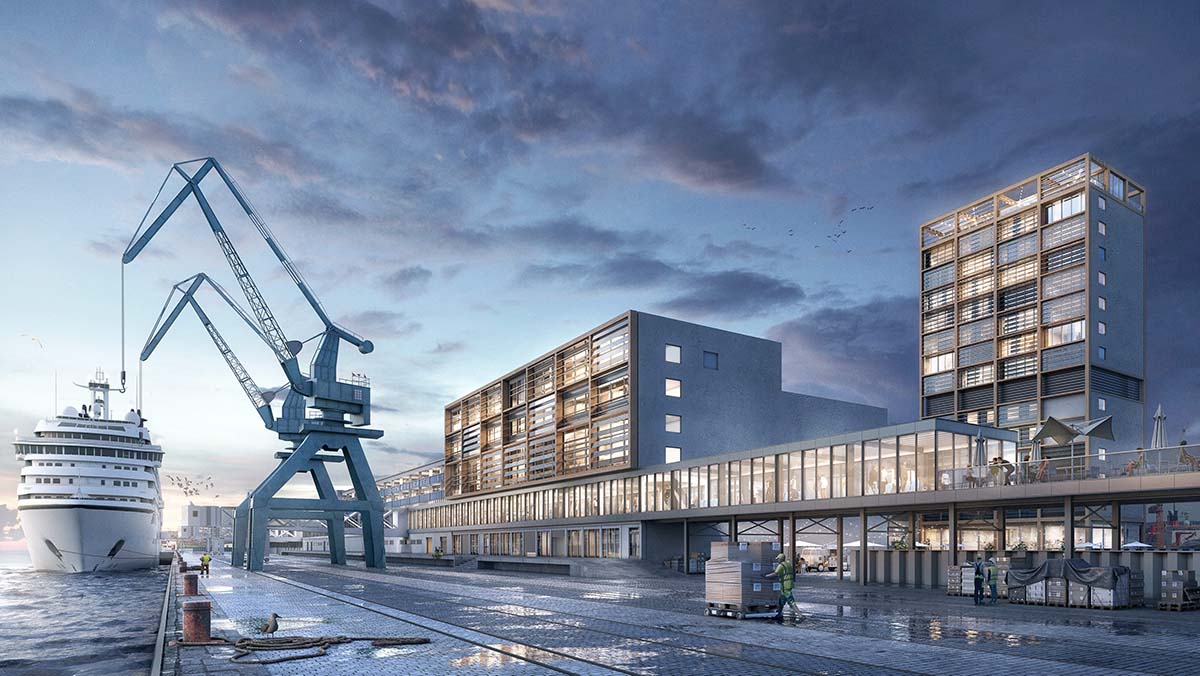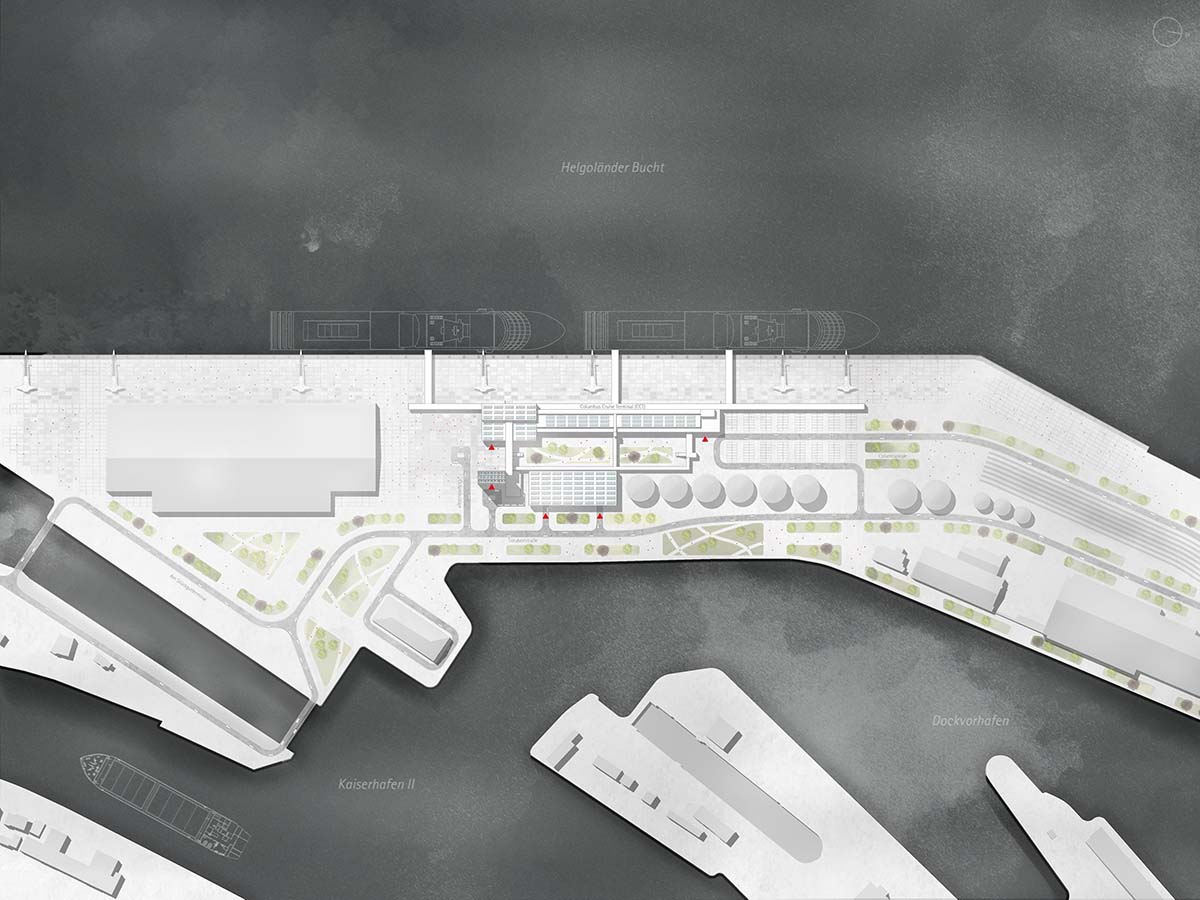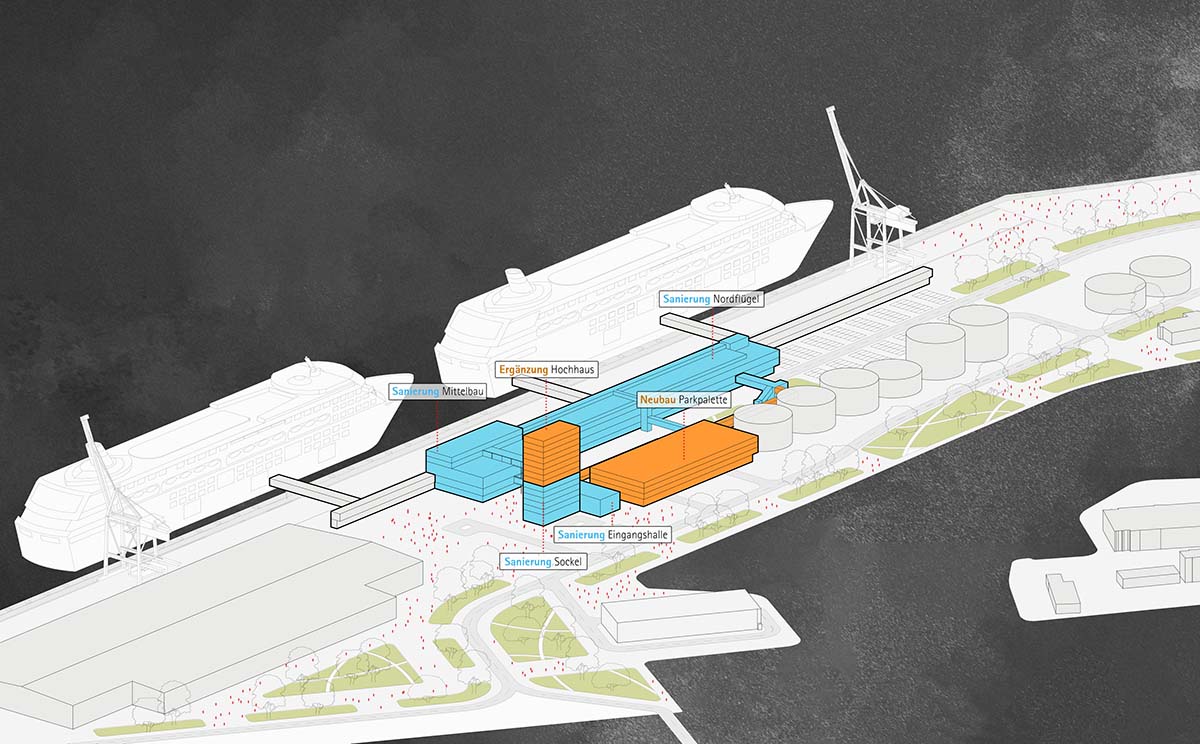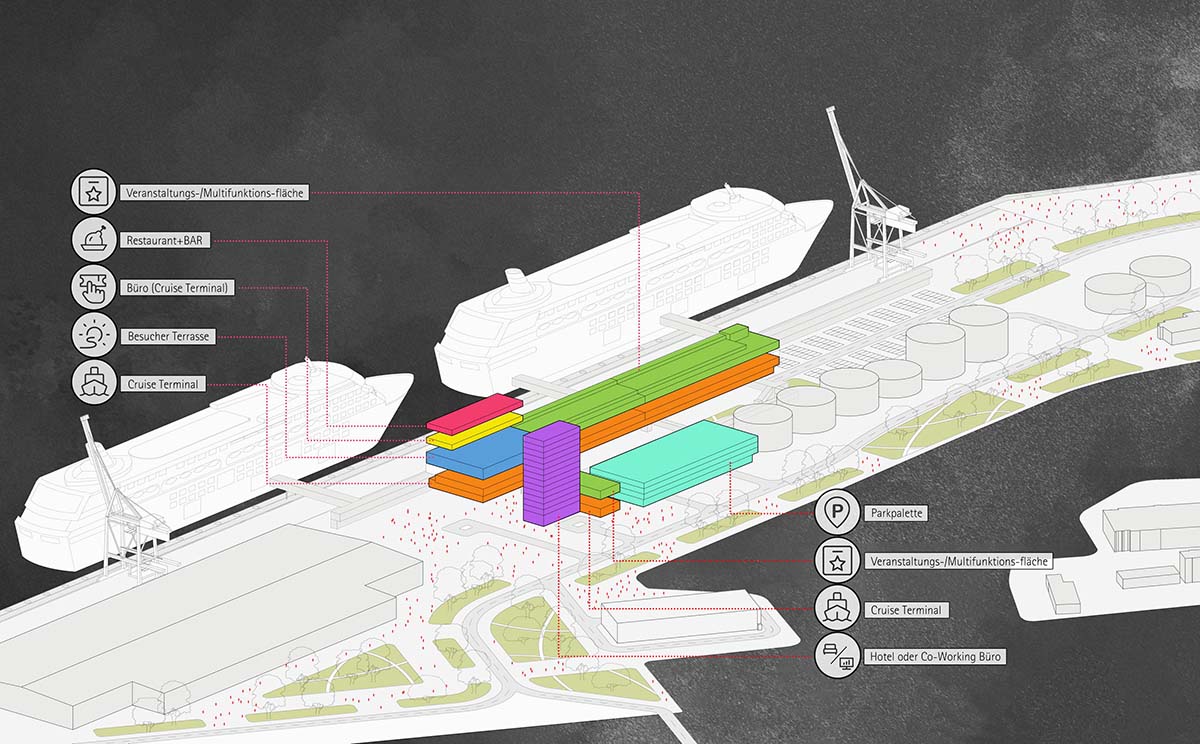Submitted by WA Contents
gmp to transform historic Columbus Cruise Terminal in Bremerhaven
Germany Architecture News - Aug 31, 2023 - 13:08 1429 views

The team of von Gerkan, Marg and Partners Architects (gmp) has won a tendering procedure to transform the historic Columbus Cruise Terminal (CCB) in Bremerhaven, Germany.
Instead of demolishing the original structure, gmp will now refurbish the Columbus Cruise Terminal (CCB), implementing more sustainable development.
The terminal at the Columbuskaje boasts a long history and is as popular with citizens as with tourists, and thus has significant potential. From as early as the 19th century, voyagers and emigrants started their travels from here.
In 1958, Elvis Presley disembarked here on his way to do his military service in Germany – and was greeted by thousands of fans. Nowadays, the Columbus Cruise Terminal is mainly used by cruise ships and is an important commercial venture and tourist attraction for the city.

Large plan. Image © gmp
Since its opening in 1827, the port served eight million people as the starting point of their journey to the New World – and as such was an attractive commercial magnet for the local shipping companies.
When the facility opened its famed Columbuskaje quay in 1927, it strengthened its role in transatlantic shipping between Germany and America.
The current terminal was created between 1952 and 1958 but as air travel started to boom in the 1960s, the time of the classic cross-Atlantic cruise came to an end. For this reason, the sections to the south of the passenger facilities were not completed and the site for these was used to build a storage depot.
In consequence, the CCB today includes elements that are used for a range of different functions. The current plan, in the spirit of sustainable development, is to retain and develop these units by converting them in line with the original – albeit aborted – design idea.

Program function. Image © gmp
An example is the high-rise building; using an innovative and sustainable loadbearing system, its reinforced concrete structure will be extended to the full, originally-planned 14 stories, for which the foundations are already in place. At the same time, iconic interior spaces, such as the first-class waiting area and the central waiting hall with associated shops will be retained.
The functions of the cruise terminal could be expanded to include rooms for culture, food outlets, and events. A recyclable car stacker in the flood-protected area to the east of the Columbus Cruise Terminal will provide the required parking spaces.
In the medium term this could be dismantled in a nondestructive way if required as part of the mobility transition. A gangway will provide a direct link to the CCB and the new public facilities. There will also be a park where ship passengers can relax while awaiting their departure and where day visitors can enjoy watching the goings-on at the terminal.

Program function. Image © gmp
In this way, gmp’s holistic concept provides a long-term solution for the implementation of a development plan based on a modular principle that will enhance the entire area.
While conversion work is going on, the Columbus Cruise Terminal will remain operational and passenger handling can continue. By retaining the existing structure it is possible to make use of the gray energy embedded in the fabric.
But this is not the only approach that makes the new/old Columbus Cruise Terminal a project based on sustainable ideas. In addition, a positive CO2 balance is achieved by using renewable energy, by using sea water for passive heating and cooling, and by installing photovoltaic elements for the generation of electricity.
gmp won an open two-stage competition for the refurbishment and extension of the plaster casting facility of the Berlin State Museums in Berlin, Germany. The firm completed the new Chinese Traditional Culture Museum in Beijing, China.
Top image courtesy of loomn Architekturvisualisierung.
> via gmp
